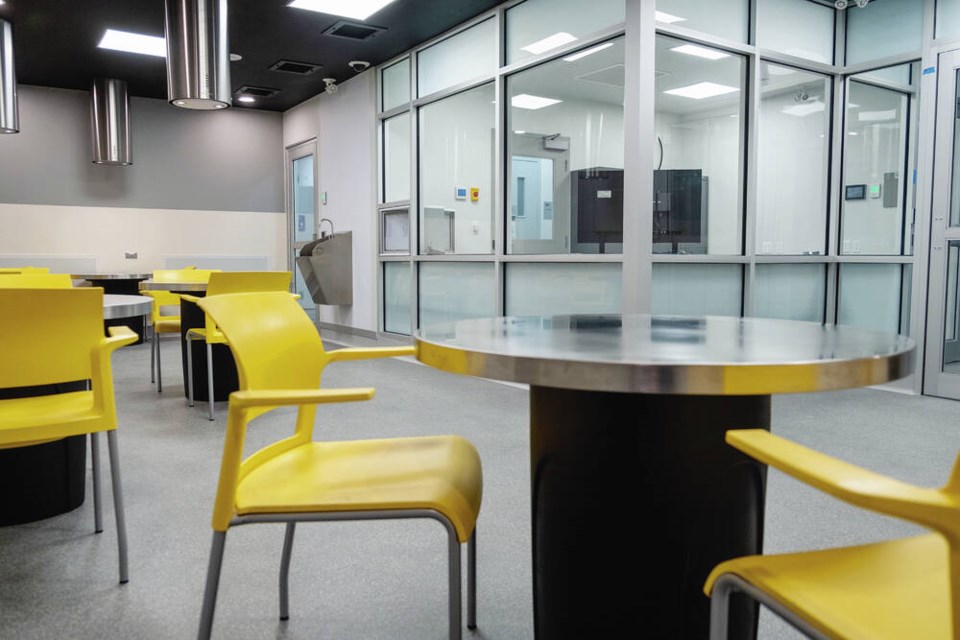The rate of illicit drug overdoses attended by paramedics in the Nanaimo area is more than double that of the rest of Vancouver Island this year.
Greater Nanaimo’s rate for drug overdoses is at 906 per 100,000 people, compared to 428 per 100,000 for the rest of the Island.
The actual number of overdoses for the first 10 months of this year was 964, compared to 586 for all of 2022.
The numbers came up in a recent presentation by Island Health officials to a committee of the mayor and council.
Paramedics in Nanaimo were called out to an average of 89 overdoses per month among all ages this year, with numbers rising in late spring.
About 10 people per month died during the first 10 months of this year in Greater Nanaimo due to toxic drugs
— up from a total of 85 deaths for all of 2022, said Dr. Shannon Waters, an Island Health medical health officer.
The 22 to 44 age group had a toxic drug death rate 2.7 times higher in Nanaimo than the rest of the Island, she said.
More than half of all overdose deaths for all ages, or 56 per cent, happened outdoors — many of them in central Nanaimo — up from 45 per cent last year.
Meanwhile, the number of indoor overdoses attended by paramedics dropped to 41 per cent this year from 52 per cent in 2022.
The increase in the number of people dying outdoors speaks to the need for affordable housing in Nanaimo, said Dana Leik, director for mental health and substance use with Island Health on the central Island. The health authority, City of Nanaimo and B.C. Housing are working together to find a location for a complex-care housing facility in the community, Leik said.
Estimates of the number of people living outdoors in the area range from 500 to 800, and many face mental health issues, brain injuries and addiction.
“I don’t think that we can just dismiss the challenges that the housing crisis has put on our community,” said Dr. Roger Walmsley, Island Health addiction medicine physician.
While there is no simple solution to the overdose crisis, some things are improving, said Walmsley, including an increase in the number of primary care physicians in the area. “I hope that makes a difference in the long run.”
Leik said discussions are also taking place about potentially longer hours at the supervised consumption site run by the Canadian Mental Health Association.
Amanda Lemon, an Island Health manager of mental health and addiction services, said it’s much more challenging to locate people for follow-up care after overdoses when they don’t have a home or a shelter to go to.
The province said in a statement that its Belonging in B.C. program to prevent and reduce homelessness is adding thousands of new supportive housing units and hundreds of complex-care spaces. It sets up multi-disciplinary regional response teams aimed at quickly responding to camps and encouraging people to move indoors, a news release said.
In Greater Victoria, 130 people have died so far from toxic drugs in 2023, making it one of the communities with the highest number of unregulated-drug deaths in B.C., along with Vancouver and Surrey, the B.C. Coroners Service said.
A permanent inhalation service opened this week at the supervised consumption site called The Harbour at 941 Pandora Ave.
Island Health calls it the first fully enclosed indoor inhalation site of its size in North America.
Jennifer Whiteside, minister of Mental Health and Addictions, said the poisoned drug supply is taking lives at a “tragic, unacceptable rate” across the province.
“More than half of the people who are dying consumed toxic drugs by smoking. This indoor inhalation service is part of our government’s plan to continue increasing access to life-saving services and connecting more people to care.”
Those who use the overdose prevention services can also obtain other health-care services, such as counselling and treatment, the ministry said.



